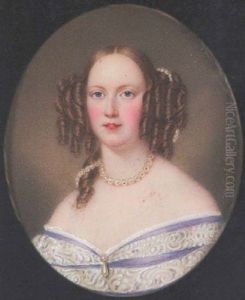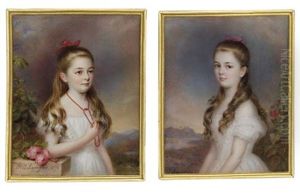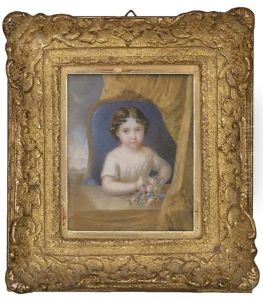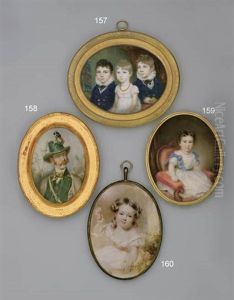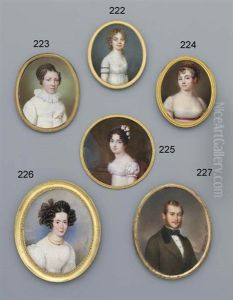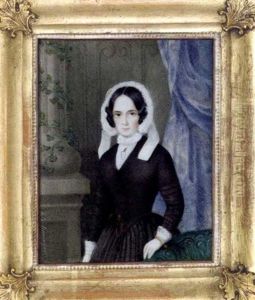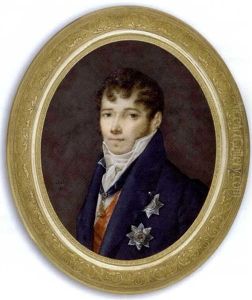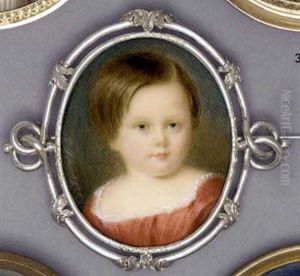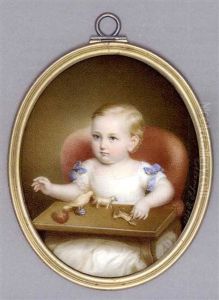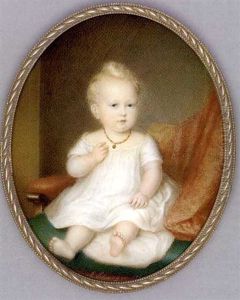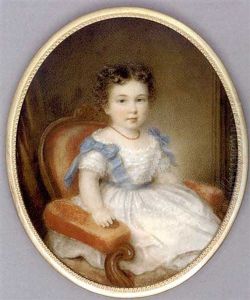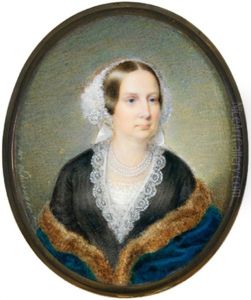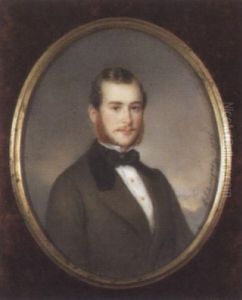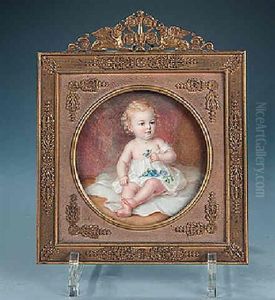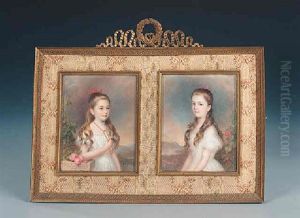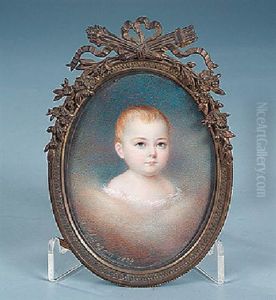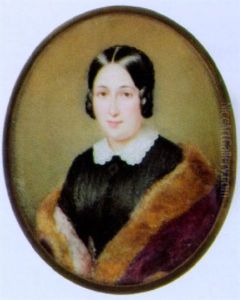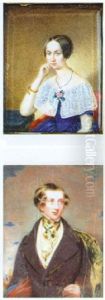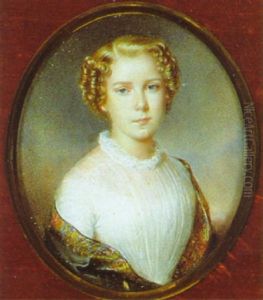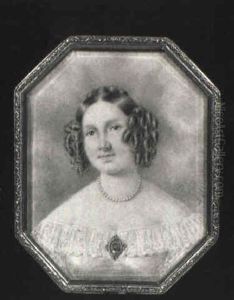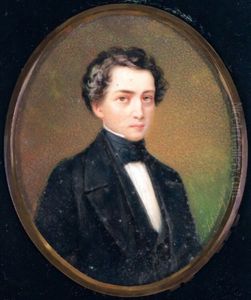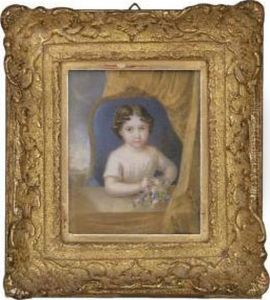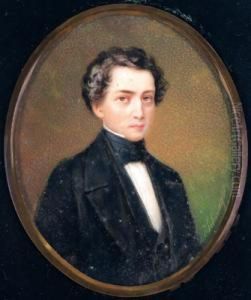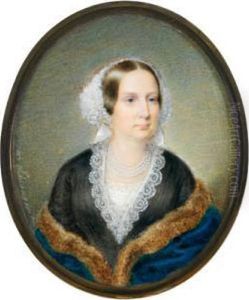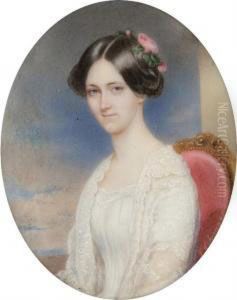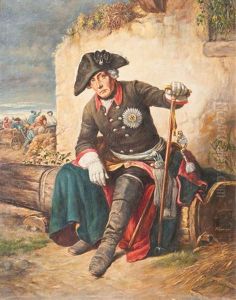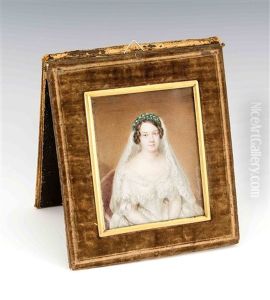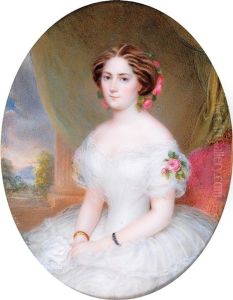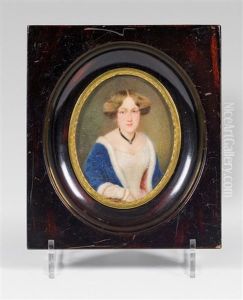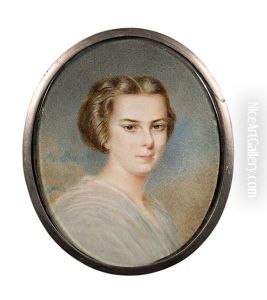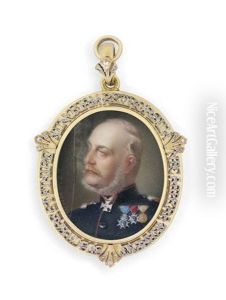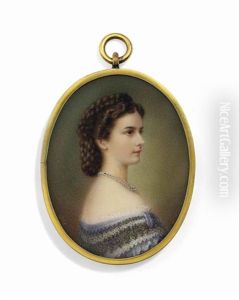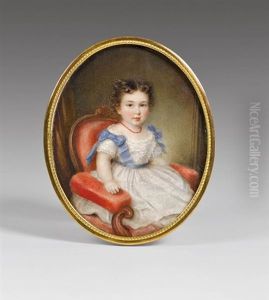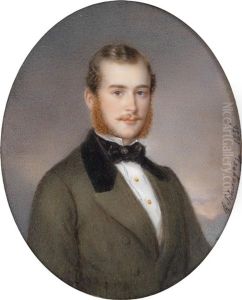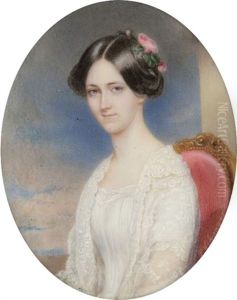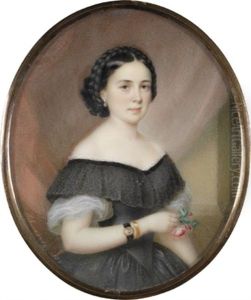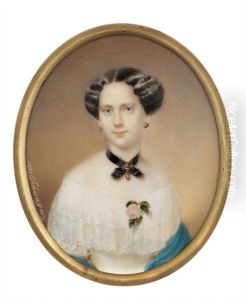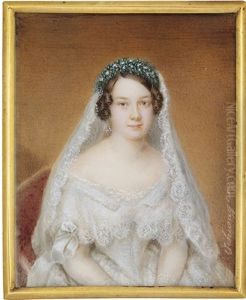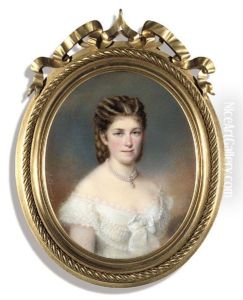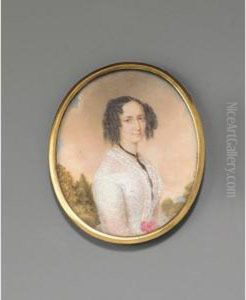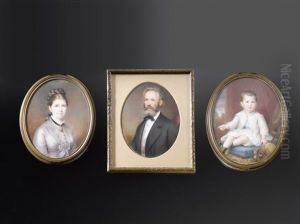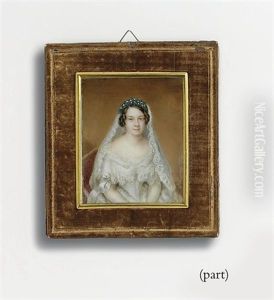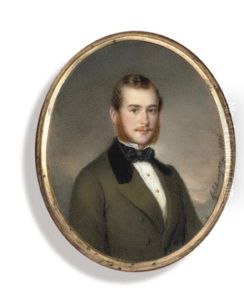Richard Schwager Paintings
Richard Schwager, born on May 27, 1822, in Vienna, Austria, was a distinguished Austrian portrait painter and lithographer whose artistic journey spanned much of the 19th century, a period rife with stylistic transformations and the burgeoning of the Biedermeier style which influenced his work. Schwager's oeuvre is primarily known for its refined elegance and the ability to capture the essence of his sitters, making him a sought-after portraitist among the aristocracy and the burgeoning bourgeoisie of his time.
Schwager's early life was marked by an immersion in the arts. He initially trained under the tutelage of Friedrich von Amerling, a leading Austrian portrait painter of the time, whose influence is evident in Schwager's meticulous attention to detail and the psychological depth of his portraits. Furthering his education, Schwager went on to study at the Academy of Fine Arts Vienna, an institution that played a pivotal role in shaping his artistic direction and proficiency in various mediums, including lithography, which he would later employ to disseminate his works to a broader audience.
In 1845, Schwager embarked on a formative journey to Italy, a trip that was customary for artists of his era, aiming to study the masterworks of the Renaissance and the burgeoning Neoclassical style. This experience enriched his palette, introduced dynamism into his compositions, and honed his skill in capturing the interplay of light and shadow, which became hallmarks of his later works. Upon his return to Vienna, he quickly established himself as a prominent portrait painter, with his works being characterized by a keen observation of detail and a nuanced portrayal of his subjects.
Throughout his career, Schwager exhibited his works at various prestigious venues, including the Paris Salon, where he gained international recognition. His portraits are notable for their elegance, realism, and the subtle yet expressive depiction of his subjects' personalities. Schwager's contributions to the art world extend beyond his portraits; his lithographs served as a medium through which the wider public could access his art, thereby cementing his legacy as an artist who bridged the gap between the elite and the masses.
Richard Schwager's death on October 13, 1880, marked the end of an era for Austrian portraiture. His body of work remains a testament to the skill and sensitivity with which he approached each of his subjects, offering insight into the social and cultural milieu of 19th-century Austria. Today, Schwager's portraits are celebrated for their historical value and artistic merit, preserved in museums and private collections around the world, where they continue to enchant viewers with their timeless beauty and emotional depth.
